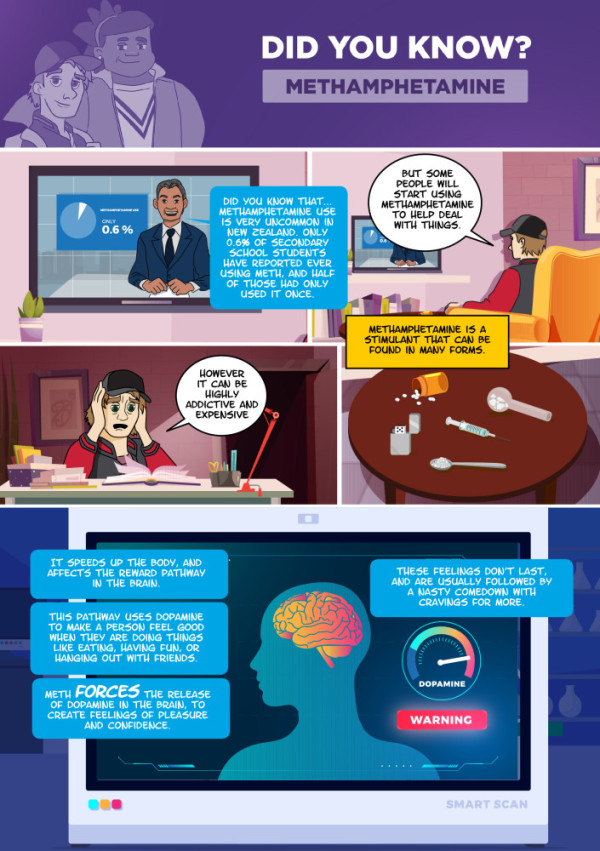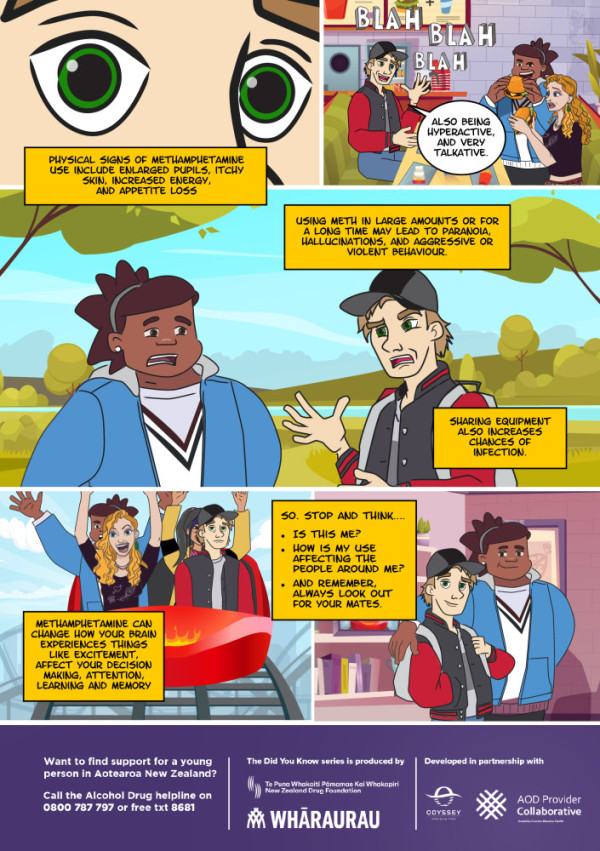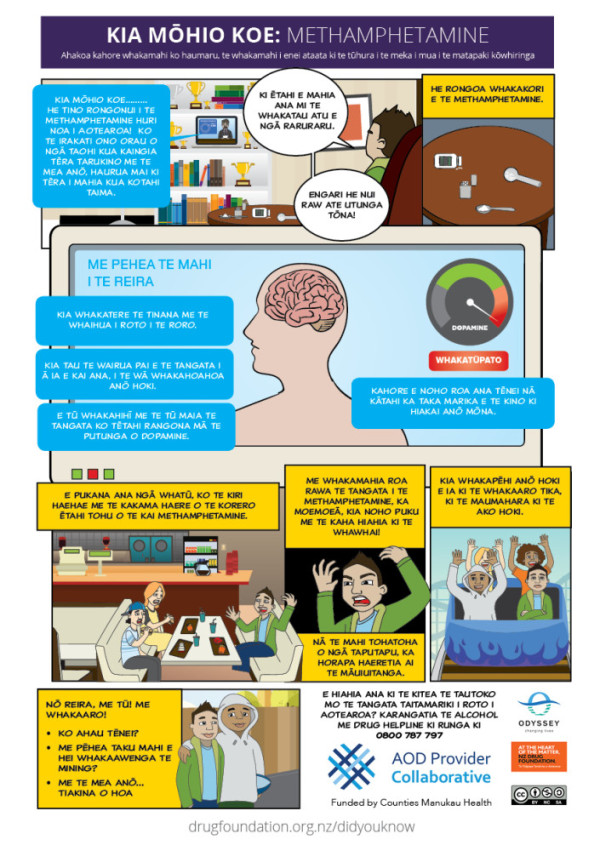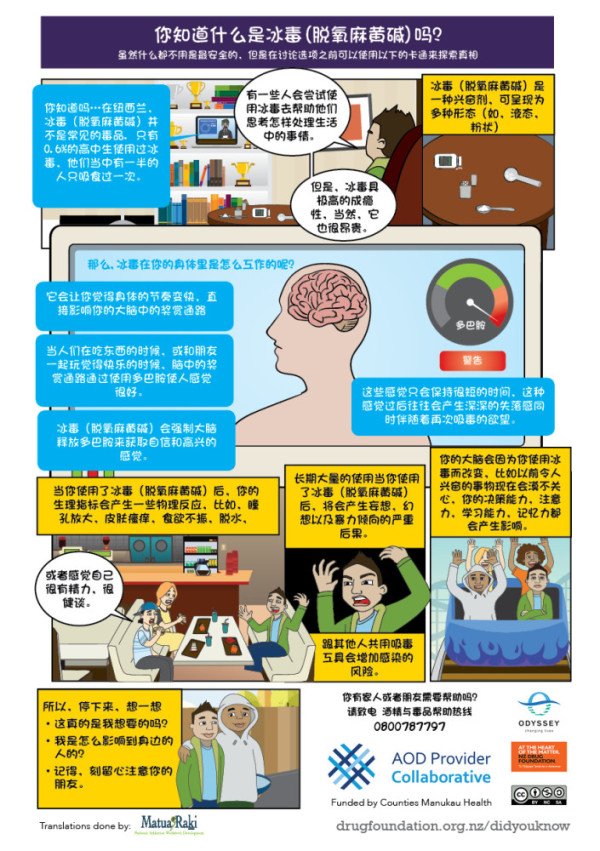This video about methamphetamine is for New Zealand parents, caregivers, whānau and those working with young people to understand basic facts about methamphetamine use. Don't stop here, start a conversation.
Did you know that… Methamphetamine use is very uncommon in New Zealand. Only 0.6% of secondary school students have reported ever using Meth, and half of those had only used it once.
Some people will start using Methamphetamine to help deal with things. However it can be highly addictive and expensive.
Methamphetamine is a stimulant that can be found in many forms. It speeds up the body, and affects the reward pathway in the brain. This pathway uses dopamine to make a person feel good when they are doing things like eating, having fun, or hanging out with friends. Meth forces the release of dopamine in the brain, to create feelings of pleasure and confidence. These feelings don’t last, and are usually followed by a nasty comedown with cravings for more.
Physical signs of Methamphetamine use include enlarged pupils, itchy skin, increased energy, appetite loss, being hyperactive, and very talkative. Using Meth in large amounts or for a long time may lead to paranoia, hallucinations, and aggressive or violent behaviour. It can change how your brain experiences things like excitement, affect your decision-making, attention, learning and memory. Sharing equipment also increases chances of infection.
So. Stop and think….
- Is this me?
- How is my use affecting the people around me?
- And remember, always look out for your mates.
Did you know...
Methamphetamine use is uncommon in New Zealand, especially among young people? However, raising it in a conversation can help your young person know that it is ok to talk to you about it should they come into contact with it or know someone who might be using it. While no use is safest, explore the facts before discussing options.
Video
Turn on Samoan subtitles in the video at the top of the page via the closed caption (CC) menu of the YouTube player controls.
Poster
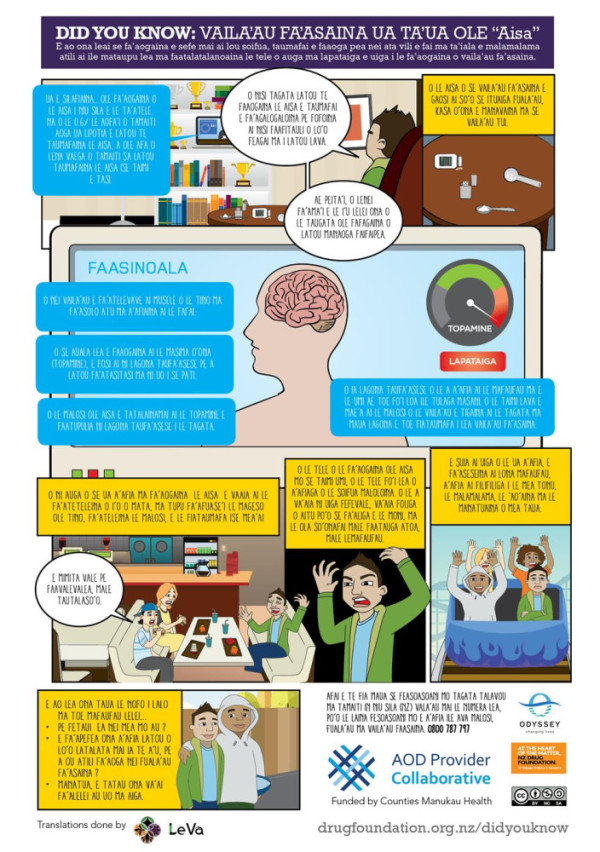
Video
Turn on Tongan subtitles in the video at the top of the page via the closed caption (CC) menu of the YouTube player controls.
Poster
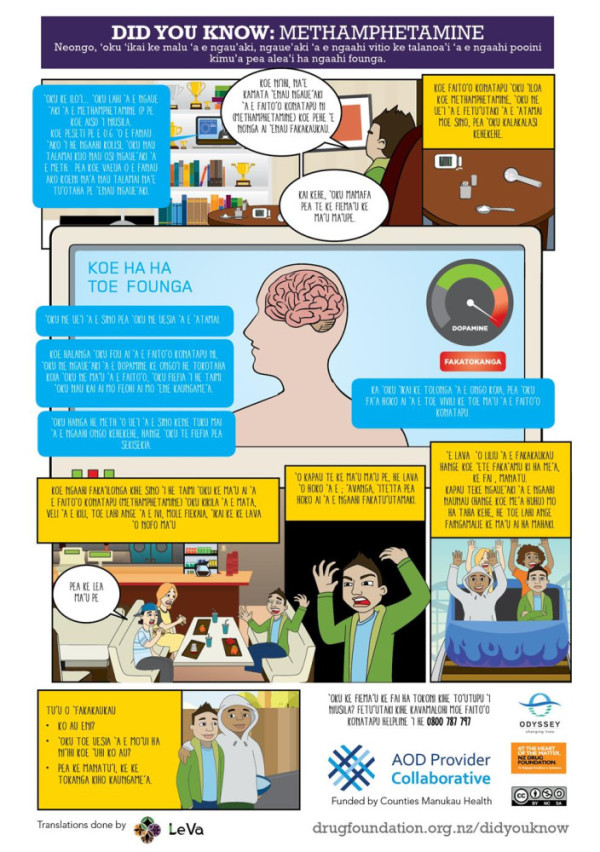
Resources
Request printed posters in any language on our Resources website.
This includes the complete Did You Know Conversation Guide which you can also view and download right now: A guide to conversations with young people about drugs and alcohol (PDF, 2.7 MB).
About Did You Know
These tools and resources were initiated by the Counties Manukau AOD Provider Collaborative and the New Zealand Drug Foundation with support from Odyssey. Expert advice and participation from young people were used in their development. Creative by Mohawk Media.

Did You Know is licensed under a Creative Commons Attribution-NonCommercial 4.0 International License.


